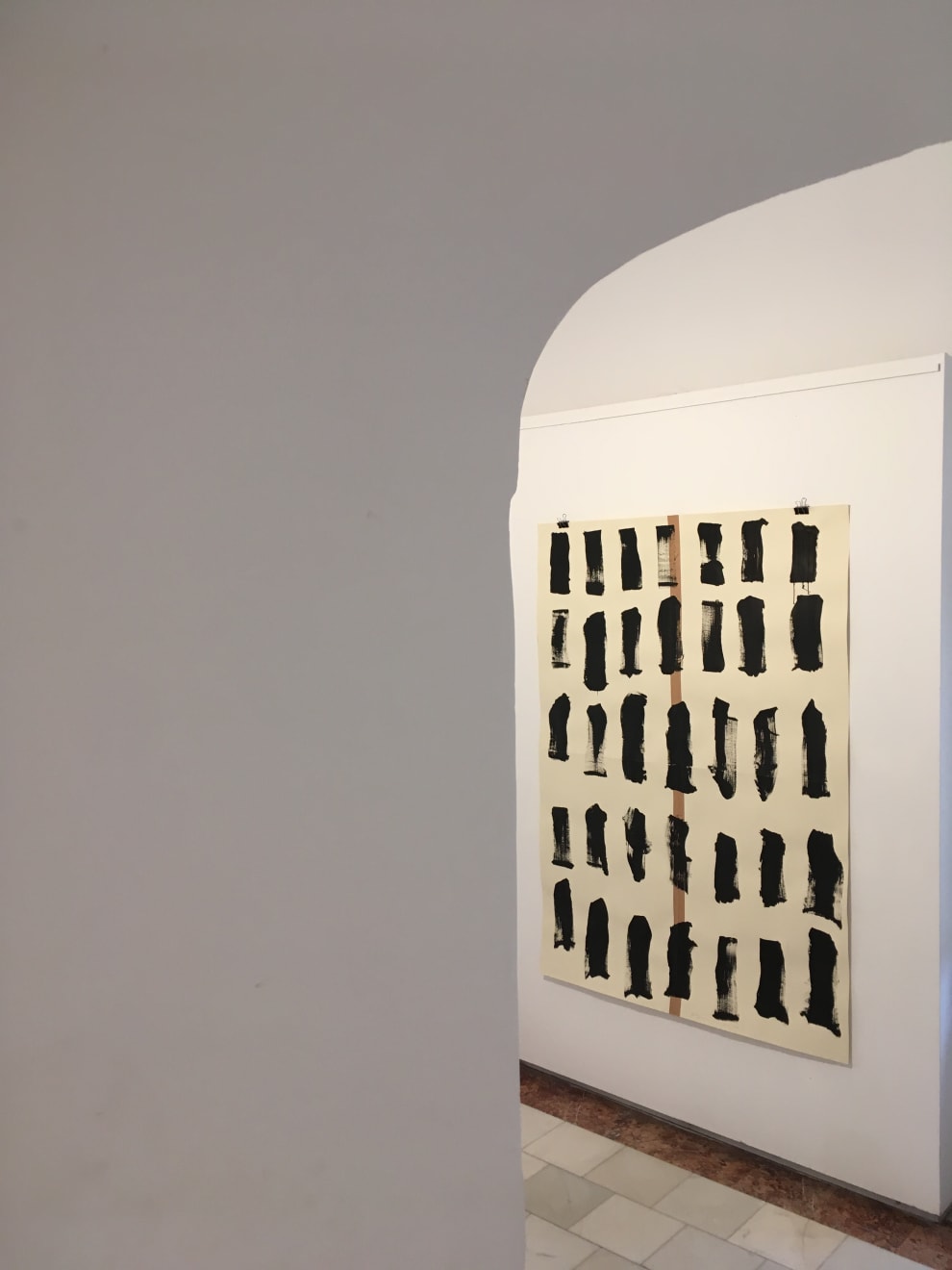Open a larger version of the following image in a popup:
 Installation view: Yi Gallery, Brooklyn, NY 2022
Installation view: Yi Gallery, Brooklyn, NY 2022
 Installation view: Yi Gallery, Brooklyn, NY 2022
Installation view: Yi Gallery, Brooklyn, NY 2022
Open a larger version of the following image in a popup:
 Installation view: Mogosoia, Romania 2019
Installation view: Mogosoia, Romania 2019
 Installation view: Mogosoia, Romania 2019
Installation view: Mogosoia, Romania 2019
Botond Részegh
Anatomy of War, 2018
Acrylic on paper, framed
78 1/2 x 55 in
200 x 140 cm
200 x 140 cm
Series: Anatomy of War
RB0009
Copyright The Artist
Further images
Works in Anatomy of War are preoccupied with the idea of war and its mechanisms. Részegh started the series in 2018 to explore nonfigurative war depiction, leading to a body...
Works in Anatomy of War are preoccupied with the idea of war and its mechanisms. Részegh started the series in 2018 to explore nonfigurative war depiction, leading to a body of work that represents an increasing distortion of the human form, revealing humans’ vulnerability. This also leads back to the artist’s earlier series, Loss of Soul (2015). In the face of war and atrocity, bodies become extremely fragile and defenseless - sometimes to the point of being weightless and annihilated. Részegh sought to understand how people function and to reevaluate the war, raising fundamental questions about the relation between the mass and the individual: how the masses are sent to battle to kill and to die, how they move and think and how the more powerful forces think for them. “I always imagined a massive crowd going out to fight as a coherent mass,” states Részegh, “a disciplined and enormous thing, moving like an amoeba, which has separate legs, but moves in concert, has a head, but others think and decide for it. This is the phenomenon that I wanted to draw and paint.” At the same time, he considers the individual who, in man-to-man combat, experiences the moment of killing someone or his own death - the winner and the victim. To Részegh, an important aspect of contemporary warfare is the fact that it also takes place in virtual spaces, which accompany the exclusion of a guilty conscience, because one does not have to look directly into the victim’s eye. Anatomically fragmented figures are expressed through thick paint buildup on paper and canvas and raw, painterly gestures. Részegh’s images poignantly depict an individual’s violence and obedience in war and warlike situations and the maddening loneliness one feels inside a crowd: “The loneliness of the winner. The loneliness of the one defeated. Death. Indifference that smells and tastes like steel, or the growing frenzy of guilt leading to madness, which overwhelms people after they take countless lives. These are the ambivalences I want to express.”
Provenance
Artist studioExhibitions
Anatomy of War, Mogosoia, Romania 20191
of
385











